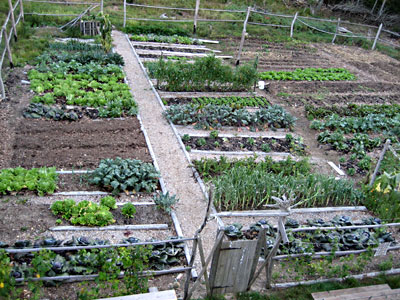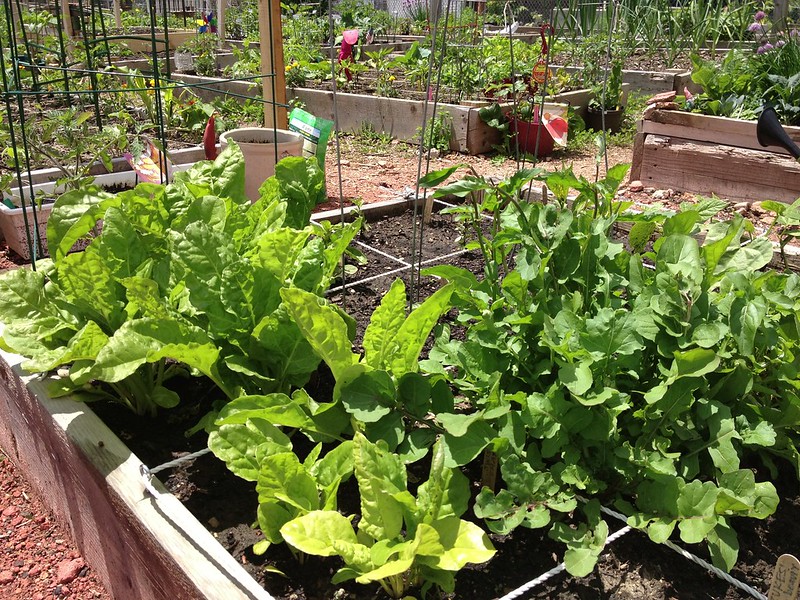How to Plan Your Homestead Gardening Effort
How to Plan Your Homestead Gardening Effort
Blog Article
Discover the Secrets to Developing a Lovely and Effective Gardening Area
Producing a attractive and effective horticulture space is not merely an issue of planting vegetables and flowers; it calls for a critical strategy that encompasses various important aspects. From selecting the right place based on sunlight and soil kind to thoughtfully creating your design and picking appropriate plants, each decision plays a critical role in the success of your garden.
Choosing the Right Location
Selecting the optimal place for your garden is critical to its success and overall visual charm. The very first step in this process entails assessing sunshine exposure, as the majority of plants need at the very least 6 hours of straight sunlight daily (Homestead Gardening). A south-facing yard generally gets the most light, while shaded locations can impede development and blooming
Additionally, consider dirt high quality and drain. Well-draining dirt is important to stop waterlogged origins, which can cause plant illness. Conducting a soil examination can give valuable info regarding pH levels and nutrient web content, allowing you to change the dirt appropriately.
Moreover, distance to water sources is another variable to evaluate - Homestead Gardening. Having simple accessibility to a pipe or irrigation system can simplify the watering procedure and urge regular plant care. Wind security is also crucial; placing your yard near frameworks, such as fencings or wall surfaces, can secure it from severe winds that may damage delicate plants
Last but not least, think about access for maintenance and harvesting. A well-placed garden permits hassle-free gain access to, guaranteeing that you can conveniently tend to your plants without creating undue stress and anxiety or disruption. Thoughtful area choice lays the structure for a thriving yard.
Choosing Plants Wisely
When picking plants for your garden, it's important to take into consideration aspects such as climate, dirt problems, and individual preferences to ensure a harmonious and productive space. A complete understanding of your neighborhood climate will certainly lead you in choosing plants that prosper in your certain atmosphere. Choosing drought-resistant ranges is beneficial in dry regions, while moisture-loving types might be a lot more suitable for locations with high rains.
Dirt conditions are equally vital; performing a soil test can disclose pH levels and nutrition content, allowing you to select plants that will thrive. Native plants are frequently an outstanding choice, as they are commonly well-adapted to local dirt types and require much less maintenance.
Reflect on your individual choices-- choosing plants that resonate with your visual preferences will improve your pleasure and dedication to preserving your garden. By very carefully examining these variables, you can develop a thriving and diverse plant choice that raises your gardening experience.
Creating Your Yard Format
With a thoughtfully picked plant selection in hand, the next action is to produce a garden format that maximizes both appeal and functionality. Begin by evaluating the readily available space, taking into consideration elements such as shade, wind, and sunlight patterns. A tactical format ought to include different areas, including locations for growing, paths, and possibly seating.
Beginning with larger plants or focal factors, such as trees or high perennials, look at this website positioned strategically to develop aesthetic interest. Layer smaller plants ahead to enhance depth and structure. Consider the development practices of your chosen plants; taller varieties need to be placed at the back or facility of beds, while much shorter ones can line the edges.
Integrating paths not only helps with accessibility for upkeep but likewise invites expedition. Use materials that enhance the yard's total visual, whether gravel, rock, or timber chips.
In addition, consider seasonal modifications and just how your format will look throughout the year. Including evergreens together with seasonal flowers can make certain year-round beauty. Inevitably, a well-designed garden format balances the natural beauty of plants with functional factors to consider, resulting in a room that is both welcoming and efficient.
Enhancing Soil Health And Wellness

To improve soil health, start by performing a dirt examination to evaluate pH degrees, nutrition content, and dirt texture. Integrate natural matter such as garden compost, well-rotted manure, or fallen leave mold to enhance soil framework, water retention, and microbial activity.
Mulching is one more reliable approach; it not only preserves moisture yet likewise subdues weeds and gradually enriches the dirt as it damages down. Avoiding too much tillage is crucial, as it can disrupt dirt framework and harm beneficial microorganisms. Rather, take on no-till or very little tillage techniques to preserve soil stability.

Keeping Your Yard Properly
A well-maintained garden gives pride and productivity, calling for regular focus to make sure that plants grow and the landscape stays inviting. Effective yard maintenance includes a number of key practices that enhance the wellness of your plants and the total visual of your area.
Routine watering is critical; nonetheless, it is very important to tailor your watering schedule based on the particular requirements of your plants and local climate problems. Mulching can help keep moisture, subdue weeds, and regulate soil temperature level. Timely weeding avoids competitors for nutrients and sources, ensuring that your plants flourish.
Pruning is another vital job. It encourages healthy growth, gets rid of dead or unhealthy branches, and look at more info forms plants to maintain an attractive structure. In addition, keeping an eye on for pests and illness is essential; early detection and intervention can conserve your plants from considerable damage.
Fertilization ought to be implemented thoughtfully, utilizing natural choices whenever possible to promote lasting soil health. Seasonal tasks such as growing, separating perennials, and preparing for wintertime will ensure your yard stays lively year-round. By following these techniques carefully, you can grow a garden that is both efficient and gorgeous.
Final Thought
Finally, the creation of a effective and stunning horticulture space needs mindful factor to consider of several crucial elements. Selecting a proper location with adequate sunlight, choosing suitable plants, developing a visually pleasing format, boosting soil health and wellness, and ensuring routine maintenance are vital components. By incorporating these techniques, one can grow a growing garden that not only improves the landscape but likewise advertises ecological balance and sustainability. Such a technique eventually brings about a rewarding horticulture experience.
From selecting the right area based on sunshine and dirt kind to thoughtfully developing your design and selecting suitable plants, each decision plays a critical function in the success of your garden. Well-draining dirt is necessary to stop water logged origins, which can lead to plant diseases.When choosing plants for your yard, it's crucial to take into consideration variables such as environment, soil problems, and individual preferences to guarantee a unified and productive space. Ultimately, a properly designed garden browse around this site design harmonizes the natural beauty of plants with useful factors to consider, resulting in a space that is both inviting and effective.

Report this page